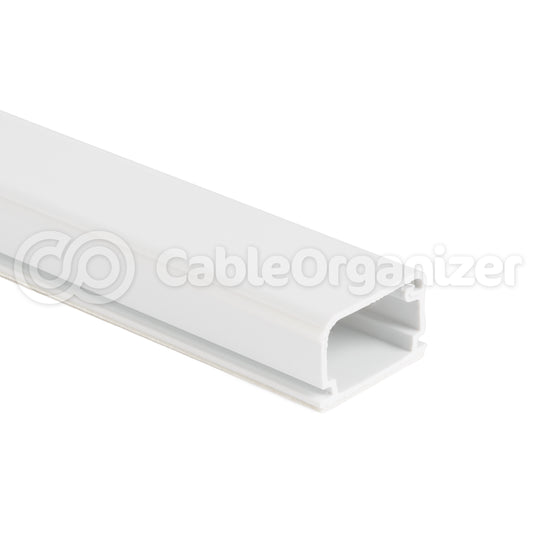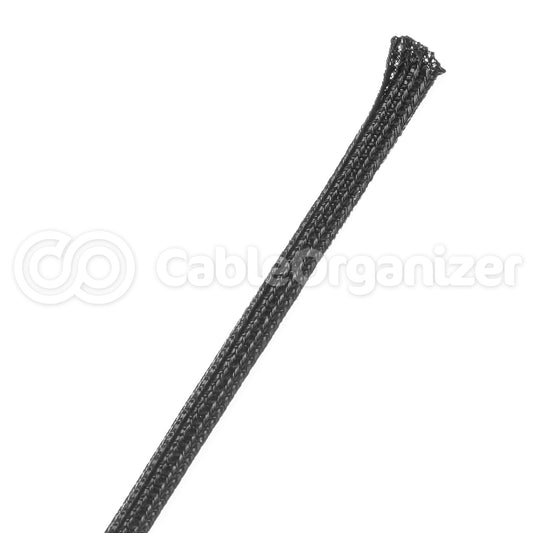4 Fast, Easy, and Affordable Ways to Hide and Protect Speaker Wire
By: CableOrganizer®

Some people like listening to music. Other people need to feel like they're right in the studio. Some people like to watch movies from the comfort of their couch. Others like to convert their living room into a movie theater, so every soundtrack is just earth-shattering. Whether you're on the casual end or obsessed with the highest quality sound attainable, one thing is the same: we've all got speakers around the house. And while those speakers may deliver the audio quality we crave, they all come with one major drawback — speaker wires. Jeez, like, so many wires. If you’re sick of your walls looking like a fairy tale, thornbush-enveloped castle because of all the wires, CableOrganizer.com has the products and know-how you need to hide speaker wires like a pro. A pro speaker wire hider. Hey, they have pro hot dog eaters, why can't they have pro speaker wire hiders? It might be a thing. (And if it's not, it should be). In any event, below you’ll find a few of our favorite options, with explanations about each to help you decide which one will work best for you.
SURFACE RACEWAY
If you asked us to name the most straightforward and versatile product for hiding speaker wires, our answer would unquestionably be the tried-and-true Surface Raceway. Décor-friendly cable conduits that can open and close lengthwise to allow you to cram all sorts of cables inside, Surface Raceways range in material from aluminum to PVC plastic, with all the basic traits in common:
- They're installed directly onto surfaces, walls, ceilings, floors, desks, counters, etc.
- They route wires and cables to keep them untangled, protected and (best of all) out of sight
When it comes to concealing speaker wires around the house, your best option is to use PVC (plastic) Raceway, which has the benefits of being lightweight, non-conductive (to cut down on electrical hazards), flame-resistant and easily paintable with latex-based paint (to seamlessly blend in with its surroundings).
You don't even need to drill holes or hammer any anchors or anything to install it, so hiding speaker wires in Surface Raceway is an easy project for any do-it-yourselfer. PVC raceways can be cut to exactly the size you need with a utility knife, hacksaw, chainsaw, laser or whatever you want (it's up to you, but we recommend either of the first two) and most come with pre-applied adhesive tape for fast, no-mess, non-invasive installation. Just peel off the adhesive seal and slap that puppy on your wall. You’ll probably want to measure it out and mark where you want to place it first, but after that, it's as simple as peel and press. Equipped with latching or sliding covers, Surface Raceway allows you to have easy and unlimited access to your speaker wires as needed.
Check out a few of our favorite raceways for clean and professional-looking speaker wire management:
CORNER DUCT

Whether you need to route speaker wires from ceiling to floor, or along a wall/ceiling joint, Corner Duct is the ideal speaker wire camouflage for audio setups that require you to run cables in corners. You can think of Corner Duct as surface raceway that’s built at a 90° angle. This specialized PVC wire management system has a wedge-shaped channel that fits perfectly into corner angles and is topped off with a sliding cover that makes it easy to install and update cables anytime.
As is the case with many surface raceways, Corner Duct is flame resistant, and can be matched to your color-scheme with just a simple coat of latex paint. Thanks to its unique shape, plastic Corner Duct can even double as crown moulding if installed along a ceiling.
CORD & WIRE CHANNELS
Cord Channels and Wire Channels are like Surface Raceways and Corner Ducts in that they're constructed of flame-resistant, paintable extruded PVC, and they’re fully backed with adhesive tape for easy installation. What’s the difference? Where Surface Raceways feature unlatching or sliding covers to add or remove wires, each Wire Channel and Cord Channel is equipped with a narrow wire slot, which allows wires to be added or removed one by one, as opposed to opening and closing long lengths of conduit. It may sound like a lazy man's problem, but the longer the distance that your hidden cables need to travel, the more difficult or annoying it might become to snap shut your length of Surface Raceway. In that case, you might want to go with channels over longer distances.
CORD COVERS
If you're cool enough to be throwing a shindig that will be attended by more than just you and your pet guinea pig, then you'll want to take steps to ensure that those who show up will come back for future get-togethers. So, when parties or other special events have you rearranging your audio system and trailing cables all over the floor, you'll have to handle that. You can't just have your cables and wires laying where anyone could theoretically (and will) trip over them. But it's not enough to just slap duct tape down over them and hope for the best. Light capacity cord covers are a reliable way to prevent trip hazards both indoors and outside, and they're much more stylish than duct tape. But which to choose? Not to worry, we've got you covered with a few of our low-profile favorites:

SafCord® Cord Cover: When it comes to covering indoor, cross-carpet speaker wire runs, you really can't beat the SafCord®, a rugged Cordura™ nylon cover that firmly affixes speaker wires and other cables to your carpet while keeping them hidden from view. SafCord® fastens to commercial, loop and Berber carpets via its hook-and-loop edging, so it leaves no messy adhesive residue, and can be reused and repositioned as often as needed. It cuts to size with scissors, lies completely flat, and is so flexible that it can even be routed upstairs.

Cord Protectors: Equally at home on hard flooring or carpet, the cord protectors don’t have trouble blending in with their surroundings. To use it, just slit the bottom with a utility knife, insert wires and cables and secure it to flooring with double-sided tape. It stores easily, too: when the party is over, just pull up the cord protector, remove the cords, and roll the cover up until it’s needed again, which hopefully will be soon since you’re the person with the awesome sound system and fewest trip hazards around.

Rubber Ducts: If you’re going to be moving the music outside, extra-rugged Rubber Ducts are the perfect way to keep speaker wires and power cords neatly covered instead of snaking randomly through your yard, over your patio or across a walkway. The last thing you want is some well-intentioned partygoer taking a rake to the nearest cable after mistaking it for a slithery serpent. In 5', 10', 12' and 25’ lengths, these flexible rubber covers offer wires and cables a high degree of protection against pedestrian traffic (and rakes) and at the same time prevent people from getting tangled in — and tripping over — outdoor cords.
So, there you have it. Now your floors can be used for walking upon, as God intended, and your walls can be used for displaying family photos or tasteful artwork.


